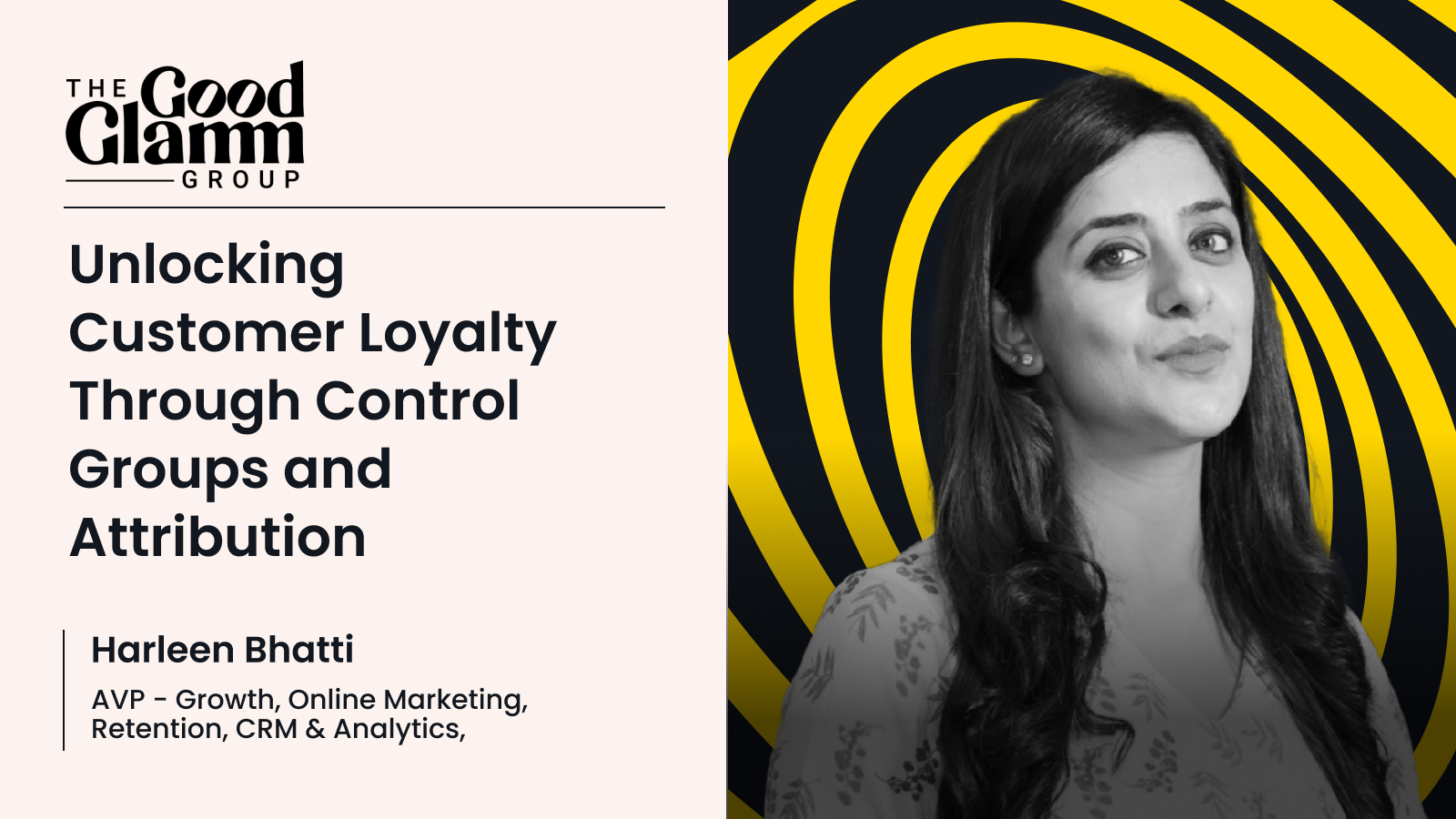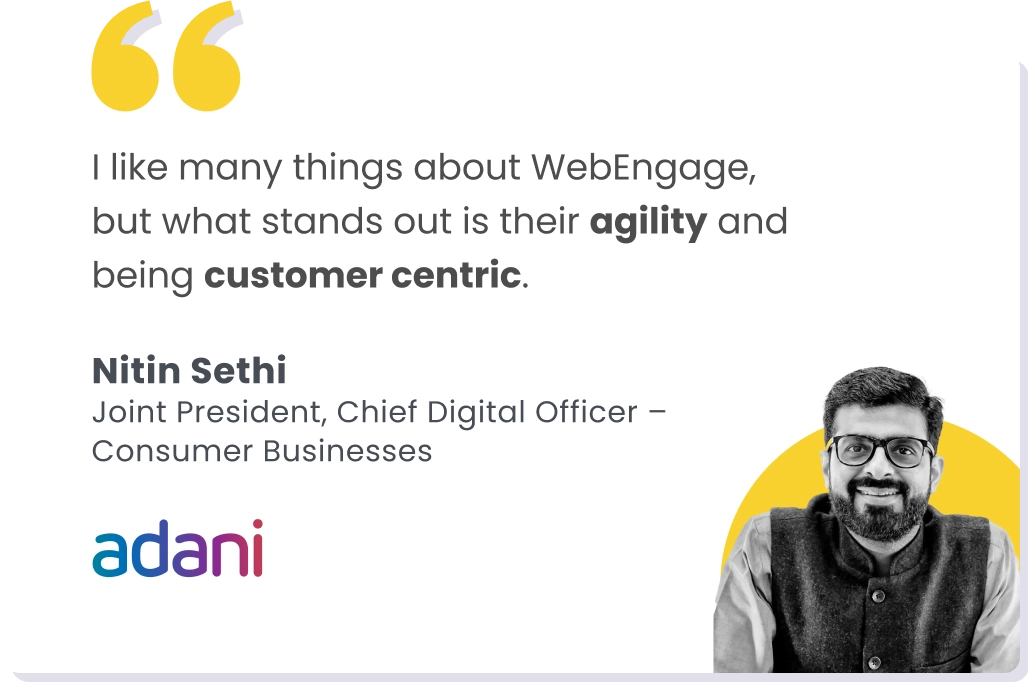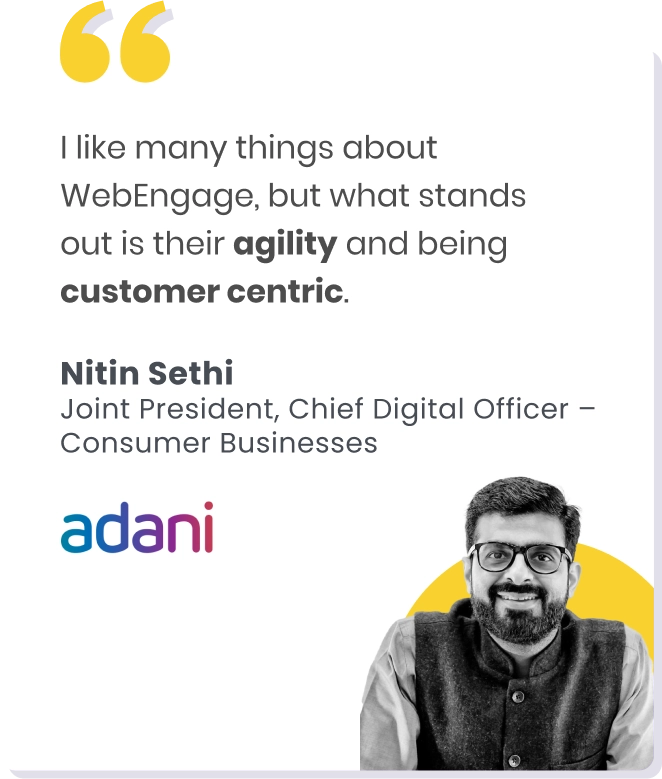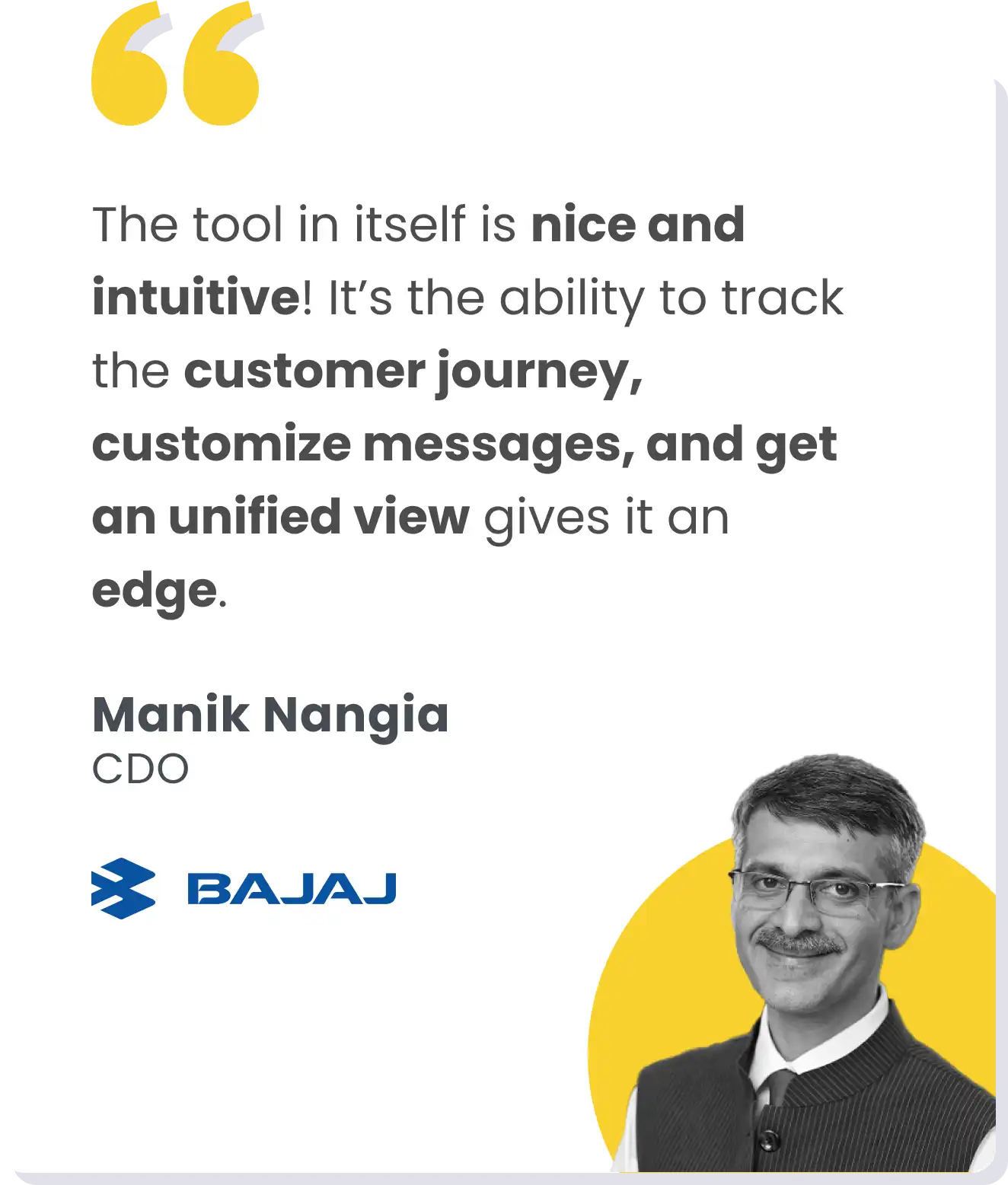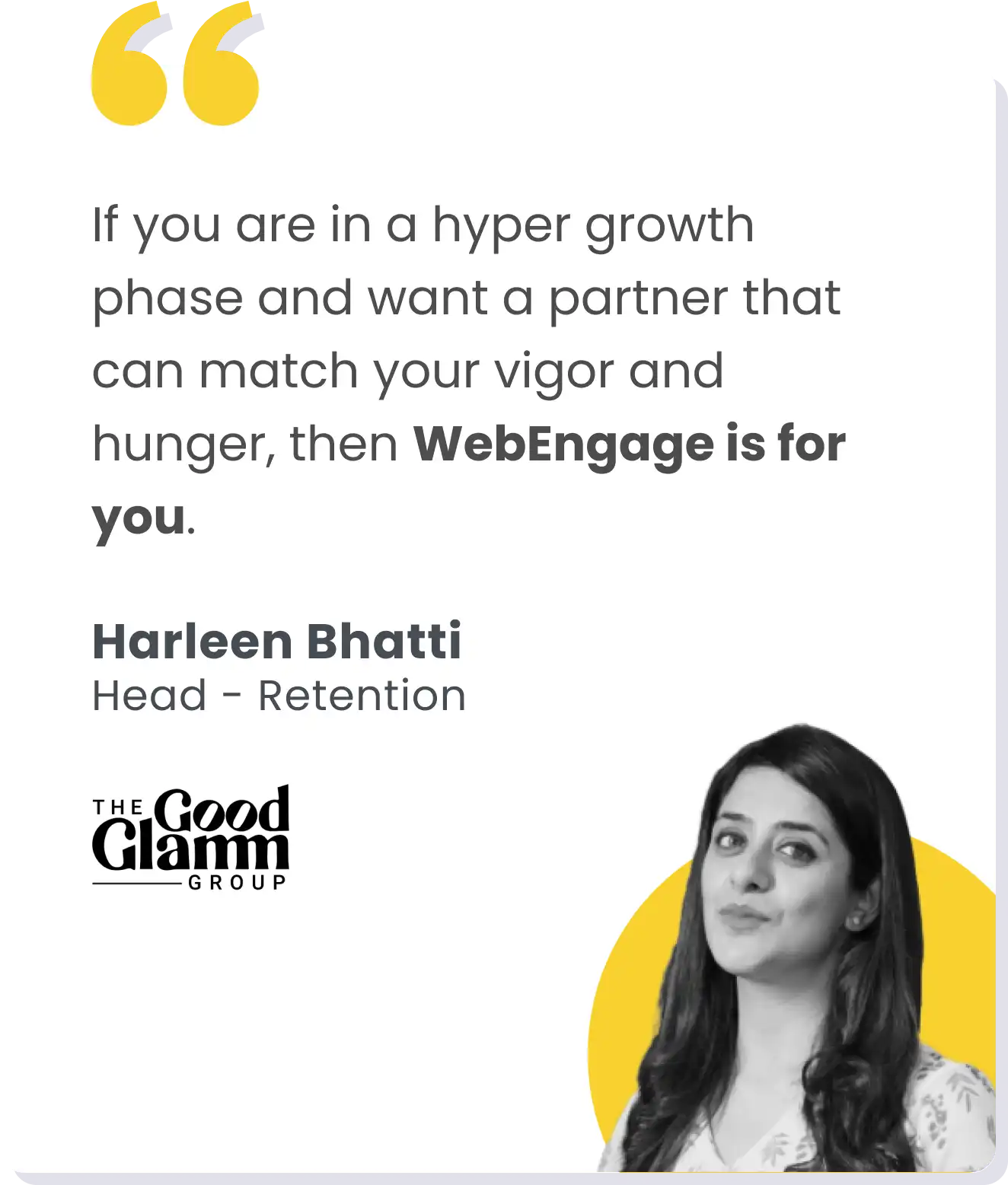I’ve experienced many different things that have shaped how I see connecting with customers.
In Saudi Arabia, acquiring new retail users is 7x more expensive.
From starting out in an advertising agency to now leading marketing at a company in Saudi Arabia, I’ve learned a lot about what works and what doesn’t.
At the agency, I worked on many exciting projects for different clients. However, on the client side, I had more control and responsibility. Every decision I made had a big impact on the company. Here are some POVs that shaped my decisions.
Data is the new oil.
One thing I’ve really come to appreciate is the power of data. I’ve been a legacy marketer, but the wave of data and retention transformed my marketing style. It made me stand and pause – take in everything that was happening around me. Advertising isn’t what it was 10 years ago. Marketing was mostly mass blasts, and the opportunity for targeted marketing was rare, unlike today.
Tools + Mindset = Change
Technology has made it easier than ever to do this. With tools like customer data platforms, we can tailor our messages to each individual. Instead of sending out one-size-fits-all ads, we use information about our customers to create personalized experiences that they’ll love. It’s like having a map to guide us in understanding what they want and need.
Let’s consider a customer, Ahmed. If I examine Ahmed’s past behavior over a few years, I understand that he’s into gaming products, so I target him with customized communication and exclusive offers around gaming consoles like Xbox and PlayStation and perhaps offer him the opportunity to pre-order before everyone else. By doing this, we provide VIP treatment to Ahmed and others like him.
That being said, not every company is taking advantage of these tools. Some are stuck doing things the old-fashioned way because they don’t understand how powerful data can be. Others worry it’s too complicated or expensive. But the truth is, it’s easier and more affordable than they think.
As marketing leaders, it’s our job to show them the value of embracing new technologies and techniques.
So, here are some insights on how I’ve tackled key business cases, optimized ROI, and leadership alignment, especially with the finance teams, to make successful strategies come to fruition.
Spotlight success.
Firstly, I’ve found it effective to craft a comprehensive scenario analysis showcasing potential outcomes. For instance, let’s say a company is struggling with low online transactions. In such a scenario, I’d develop a detailed plan outlining how implementing an omnichannel campaign could boost online engagement, ultimately leading to improved ROI. By demonstrating how key performance indicators (KPIs) can be positively impacted by the proposed solution, it becomes easier to garner support for the investment. Remember that your plan must always aim to answer the dreaded “So What?” from every angle.
Manage expectations.
Secondly, maintaining transparent communication with top management, particularly during the initial stages of implementing a solution, is crucial. By showcasing early results and demonstrating tangible value as proof of concept through pilot campaigns, it becomes easier to secure buy-in from leadership. This initial support lays the foundation for scaling up initiatives over time.
Focus on long-term intangibles.
Now, regarding ROI, it’s essential to understand that it’s not solely about financial gains. For instance, improving website registration rates through targeted campaigns may not yield immediate financial returns, but it enhances long-term customer engagement and satisfaction. Similarly, conducting satisfaction surveys may not directly translate into monetary gains, but they provide invaluable insights for refining services and fostering customer loyalty.
Solve for the big picture.
In terms of investment size, there’s a common misconception that adopting advanced solutions like customer data platforms (CDPs) requires substantial resources. However, in reality, the investment is often reasonable, and the returns far outweigh the costs. Take, for example, addressing cart abandonment—an essential yet often overlooked aspect of e-commerce. Implementing simple reminder campaigns can lead to significant improvements in conversion rates with minimal investment. To convince your stakeholders why the investment is justified in a structured way, refer to the earlier part of my article.
The Japanese call it Kaizen.
Or Continuous Improvement. When it comes to implementation, I prefer taking incremental steps, especially when introducing new concepts to a business. Starting with a few essential campaigns allows us to gauge effectiveness, fine-tune strategies, and build a compelling case for further investment. This phased approach minimizes risks and ensures sustainable growth.
You have leverage. Use it.
Additionally, leveraging external partners or software providers can expedite the implementation process and provide valuable expertise. These partners not only offer technical support but also help identify relevant use cases and optimize campaign performance.
However, it’s essential to choose partners carefully, considering factors like credibility, customer satisfaction, and financial proposals. Collaborating with experienced providers ensures smoother implementation and maximizes the chances of success. If your potential partner seems non-committal on output goals, you should definitely reconsider your association with them.
Don’t lose sight of the target.
Lastly, while evaluating solutions, it’s crucial to focus on features that directly contribute to achieving business goals. Avoid getting sidetracked by flashy features that may not align with the core objectives. Look beyond the vanity metrics to unlock the solution’s true potential. So, education plays a vital role in debunking misconceptions and ensuring stakeholders understand the proposed solution’s true value.
Overall, success stories abound in the realm of marketing implementation. One such example is a targeted campaign to win back lost customers.
“By sending personalized messages and offering incentives, we managed to re-engage 11% of previously inactive or lost clientele, resulting in a tangible increase in sales and customer loyalty.”
If you don’t hit the target, retarget.
“So, I was really surprised to find out that a lot of people who stopped using the customer data engagement solution actually came back.”
Some businesses might think that once someone leaves, they’re gone for good, but that’s not always true. Sure, some people leave because they move away or decide not to come back, but many just need a little nudge to return. Maybe they need a friendly message or a reminder that we’re still here for them. Sometimes, a small incentive can do the trick. We had a case where we reached out to customers who had never used our online services before and offered them a discount coupon because the local market is a high volume, low margin game, and discounts work really well if you want users to try out our online platform.
The online osmosis.
Another interesting thing we noticed is how online shopping has grown, especially in the consumer electronics sector.
Only 5% of the consumer electronics sector transactions in Saudi Arabia happened online before COVID-19. Post COVID, 5 became 15%. 15 is now close to 24%.
We ran a campaign to encourage customers to shop online, especially those who had only shopped in our stores before. By offering them discounts and special deals, we were able to get offline users to go online.
However, the takeaway here is to balance the two channels via omnichannel engagements. Tie online and offline touchpoints with smooth handovers to capitalize on the best of both worlds. It is never about one or the other really, but the sweet blend of both, and sometimes that message seems to go missing in the heated boardroom talks.
Keep things personal.
When it comes to personalizing our communication, I’ve learned a lot from my travels to different countries. People have different preferences and backgrounds, so it’s important to tailor our messages to each customer. For example, if someone usually buys Apple products, we’ll make sure to let them know about the hottest deals on the latest offerings. And if they prefer entry-level products, we don’t overwhelm them with expensive options.
Using AI has been a game-changer for us. It helps us analyze customer data and predict their future behavior. This allows us to plan our marketing campaigns more effectively and offer personalized recommendations to each customer. AI also helps us create content that resonates with our audience and improves our search engine rankings.
It all boils down to this.
“Retention marketing is all about understanding our customers and providing them with the best possible relevant experience.”
It’s a journey, and we’re constantly learning and adapting to meet their needs. With the right tools and strategies, we can build lasting relationships with our customers, and if that helps us stay a step ahead of the competition, so be it.






